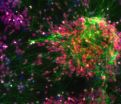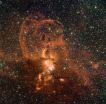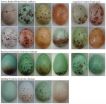(Press-News.org) A team of scientists at Penn State University, the Salk Institute for Biological Studies, and other institutions have developed a method for recreating a schizophrenic patient's own brain cells, which then can be studied safely and effectively in a Petri dish. The method brings researchers a step closer to understanding the biological underpinnings of schizophrenia. The method also is expected to be used to study other mysterious diseases such as autism and bipolar disorder, and the researchers hope that it will open the door to personalized medicine -- customized treatments for individual sufferers of a disease based on genetic and cellular information. The study will be published in a future edition of the journal Nature and will be posted on the journal's advance online website on 13 April 2011.
Gong Chen, an associate professor of biology at Penn State and one of the study's authors, explained that the team first took samples of skin cells from schizophrenic patients. Then, using molecular-biology techniques, they reprogrammed these original skin cells to become unspecialized or undifferentiated stem cells called induced pluripotent stem cells (iPSCs). "A pluripotent stem cell is a kind of blank slate," Chen explained. "During development, such stem cells differentiate into many diverse, specialized cell types, such as a muscle cell, a brain cell, or a blood cell."
After generating iPSCs from skin cells, the authors cultured them to become brain cells, or neurons. They then compared the neurons derived from schizophrenic patients to the neurons created from the iPSCs of healthy individuals. They found that the neurons generated from schizophrenic patients were, in fact, distinct: compared with healthy neurons, they made fewer connections with each other. Kristen Brennand, a Salk researcher and one of the study's authors, then administered a number of frequently prescribed antipsychotic medications to test the drugs' ability to improve how neurons communicate with neighboring cells. "Now, for the very first time, we have a model system that allows us to study how antipsychotic drugs work in live, genetically identical neurons from patients with known clinical outcomes, and we can start correlating pharmacological effects with symptoms," Brennand said.
Chen, who contributed to the study by using electrophysiology techniques to test the function of the iPSC-derived neurons, described the new method as "patient specific," offering a step toward personalized medicine for sufferers of schizophrenia and potentially other diseases. "What's so exciting about this approach is that we can examine patient-derived neurons that are perhaps equivalent to a particular patient's own neural cells," Chen said. "Obviously, we don't want to remove someone's brain cells to experiment on, so recreating the patient's brain cells in a Petri dish is the next best thing for research purposes. Using this method, we can figure out how a particular drug will affect that particular patient's brain cells, without needing the patient to try the drug, and potentially, to suffer the side effects. The patient can be his or her own guinea pig for the design of his or her own treatment, without having to be experimented on directly."
Lead author Fred Gage, a professor at Salk's Laboratory of Genetics and holder of the Vi and John Adler Chair for Research on Age-Related Neurodegenerative Diseases, explained that schizophrenia exemplifies many of the research challenges posed by complex psychiatric disorders. "This model not only affords us the opportunity to look at live neurons from schizophrenia patients and healthy individuals to understand more about the disease mechanism, but also it allows us to screen for drugs that may be effective in reversing it," Gage said.
Schizophrenia, which is defined by a combination of paranoid delusions, auditory hallucinations, and diminished cognitive function, afflicts one percent of the population worldwide, corresponding to nearly three million people in the United States alone. Genetic evidence indicates that many different combinations of genetic lesions -- some of them affecting the susceptibility to environmental influences -- may lead to a variety of signs and symptoms collectively labeled schizophrenia.
"Nobody knows how much the environment contributes to the disease," said Brennand. "By growing neurons in a dish, we can take the environment out of the equation and start focusing on the underlying biological problems." In another part of the study, Brennand used a modified rabies virus, developed by Salk professors Edward Callaway and John Young, to highlight the connections between neurons. The viral tracer made it apparent that the schizophrenic neurons connected less frequently with each other and had fewer projections growing out from their cell bodies. In addition, gene-expression profiles identified almost 600 genes whose activity was misregulated in these neurons; 25 percent of those genes had been implicated in schizophrenia before.
Gage added that, for many years, mental illness has been thought of as a strictly social or environmental disease. "Many people believed that if affected individuals just worked through their problems, they could overcome them," he said. "But we are showing real biological dysfunctions in neurons that are independent of the environment."
INFORMATION:
In addition to Gage, Brennand, and Chen, other researchers who contributed to the study include Anthony Simone, Jessica Jou, Chelsea Gelboin-Burkhart, Ngoc Tran, Sarah Sangar, Yan Li, Yanglin Mu and Diana Yu in the Gage Laboratory; Shane McCarthy at the Cold Spring Harbor Laboratory in New York; and Jonathan Sebat at the University of California at San Diego.
The work was funded, in part, by the California Institute for Regenerative Medicine, the Lookout Foundation, the Mathers Foundation, and the Helmsley Foundation.
[ Katrina Voss / Gina Kirchweger ]
CONTACTS
Gong Chen: cell 814-880-0367, office 814-865-2488, gongchen@psu.edu
Fred Gage: 858-453-4100 extension 1012, gage@salk.edu
Barbara Kennedy (PIO): 814-863-4682, science@psu.edu
IMAGE
Aigh-resolution images associated with this research are online at http://www.science.psu.edu/news-and-events/2011-news/Chen4-2011
The CAPTION for this image is:
Scientists at Penn State University, the Salk Institute for Biological Studies, and other institutions have developed a method for recreating a schizophrenic patient's own neurons in the laboratory. The research is expected to help in understanding the biological underpinnings of schizophrenia and also to lead to treatments customized for individual patients. With the new method, some of the patient's own DNA-containing skin cells are collected and transformed with molecular-biology techniques first into stem cells and then into neurons. In this microscopic image, nuclei originated from human cells are stained red and stem-cell-derived newborn neurons are stained green.
The CREDIT for this image is:
Gong Chen laboratory, Penn State University
Scientists recreate brain cells from skin cells to study schizophrenia safely
2011-04-14
ELSE PRESS RELEASES FROM THIS DATE:
Patients' own cells yield new insights into the biology of schizophrenia
2011-04-14
LA JOLLA, CA- After a century of studying the causes of schizophrenia-the most persistent disabling condition among adults-the cause of the disorder remains unknown. Now induced pluripotent stem cells (iPSCs) generated from schizophrenic patients have brought researchers from the Salk Institute for Biological Studies a step closer to a fundamental understanding of the biological underpinnings of the disease.
In their study, published in the April 13, 2011 advance online issue of the journal Nature, the Salk team reports both that neurons generated from these patient-derived ...
UCSF neurosurgeons test new device for placing brain implants
2011-04-14
A new MRI device that guides surgeons as they implant electrodes into the brains of people with Parkinson's disease and other neurological disorders could change the way this surgery, called deep brain stimulation, is performed at medical centers across the country, according to a group of doctors at University of California, San Francisco.
Deep brain stimulation can help to alleviate patients' symptoms, and the new device will make the procedure faster and more comfortable for the patient. It grew out of a home-grown technique developed by a team of UCSF neurosurgeons ...
Celestial fireworks from dying stars
2011-04-14
NGC 3582 is part of a large star-forming region in the Milky Way, called RCW 57. It lies close to the central plane of the Milky Way in the southern constellation of Carina (The Keel of Jason's ship, the Argo). John Herschel first saw this complex region of glowing gas and dark dust clouds in 1834, during his stay in South Africa.
Some of the stars forming in regions like NGC 3582 are much heavier than the Sun. These monster stars emit energy at prodigious rates and have very short lives that end in explosions as supernovae. The material ejected from these dramatic events ...
Long-sought fossil mammal with transitional middle ear found
2011-04-14
Paleontologists from the American Museum of Natural History and the Chinese Academy of Sciences announce the discovery of Liaoconodon hui, a complete fossil mammal from the Mesozoic found in China that includes the long-sought transitional middle ear. The specimen shows the bones associated with hearing in mammals— the malleus, incus, and ectotympanic— decoupled from the lower jaw, as had been predicted, but were held in place by an ossified cartilage that rested in a groove on the lower jaw. The new research, published in Nature this week, also suggests that the middle ...
City of Gold Continues to Boost Weekend Free Bingo Specials at City Bingo
2011-04-14
Free bingo site City Bingo has stepped up its devotion to providing its players with an array of weekend special and promotions. The metropolitan bingo site already offers 70% bonuses on Saturdays and 80% bonuses on Sundays and has now added The Bingo Avenue Tournament.
Players depositing at weekends had already been enjoying the aforementioned bonuses on their deposits and the introduction of their latest game is likely to keep the site buzzing. The new feature involves players picking numbers that they don't think will come up in a draw, they can swap any points accrued ...
An advance for a newborn vaccine approach
2011-04-14
Infectious disease is a huge cause of death globally, and is a particular threat to newborns whose immune systems respond poorly to most vaccines. A new approach developed at Children's Hospital Boston, using an adjuvant (an agent to stimulate the immune system) along with the vaccine, shows promise in a study of blood from Gambian infants. Results will appear in the open-access journal PLoS ONE on April 13.
The ability to immunize newborns would close their window of vulnerability to serious infections during the first months of life, such as respiratory syncytial ...
Understanding Your Breast Reconstruction Options: Autologous Tissue
2011-04-14
If you have been diagnosed with breast cancer that requires surgery, the time to consider reconstruction options is now, even before you schedule your mastectomy or lumpectomy. Because the type of mastectomy procedure you receive can have a significant impact on your reconstruction options, failing to consider your options early can limit them later.
Getting breast reconstruction is optional, it is not required, and some women find that life without breasts is freeing. However, if you would prefer to maintain your feminine appearance, breast reconstruction is a far ...
Biological arms races in birds result in sophisticated defenses against cuckoos
2011-04-14
VIDEO:
The film clip shows a nest of the most frequent host of the cuckoo finch, the tawny-flanked prinia, which has an extravagantly diverse range of eggs. The prinia parent has...
Click here for more information.
New research reveals how biological arms races between cuckoos and host birds can escalate into a competition between the host evolving new, unique egg patterns (or 'signatures') and the parasite new forgeries.
Brood parasitic birds such as cuckoos lay eggs ...
What Should I Do After a Car Accident in Georgia?
2011-04-14
The moments immediately following a serious auto accident can be overwhelming and scary, especially if someone suffers serious personal injury or death. Oftentimes, people are in a state of shock and not thinking clearly following a horrific car accident, but the moments immediately following the accident are critical to the outcome of a personal injury claim that may be filed later.
For this reason, even though you will be overwhelmed and frightened, it is important that you take certain steps after a car accident and never admit fault at the scene of the accident ...
Plasma nanoscience needed for green energy revolution
2011-04-14
A step change in research relating to plasma nanoscience is needed for the world to overcome the challenge of sufficient energy creation and storage, says a leading scientist from CSIRO Materials Science and Engineering and the University of Sydney, Australia.
Professor Kostya (Ken) Ostrikov of the Plasma Nanoscience Centre Australia, CSIRO Materials Science and Engineering, has highlighted, in IOP Publishing's Journal of Physics D: Applied Physics, the unique potential of plasma nanoscience to control energy and matter at fundamental levels to produce cost-effective, ...




